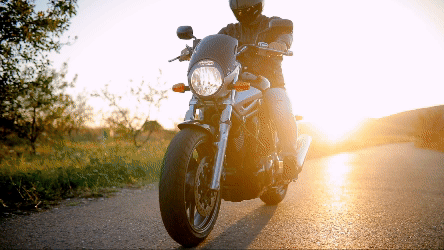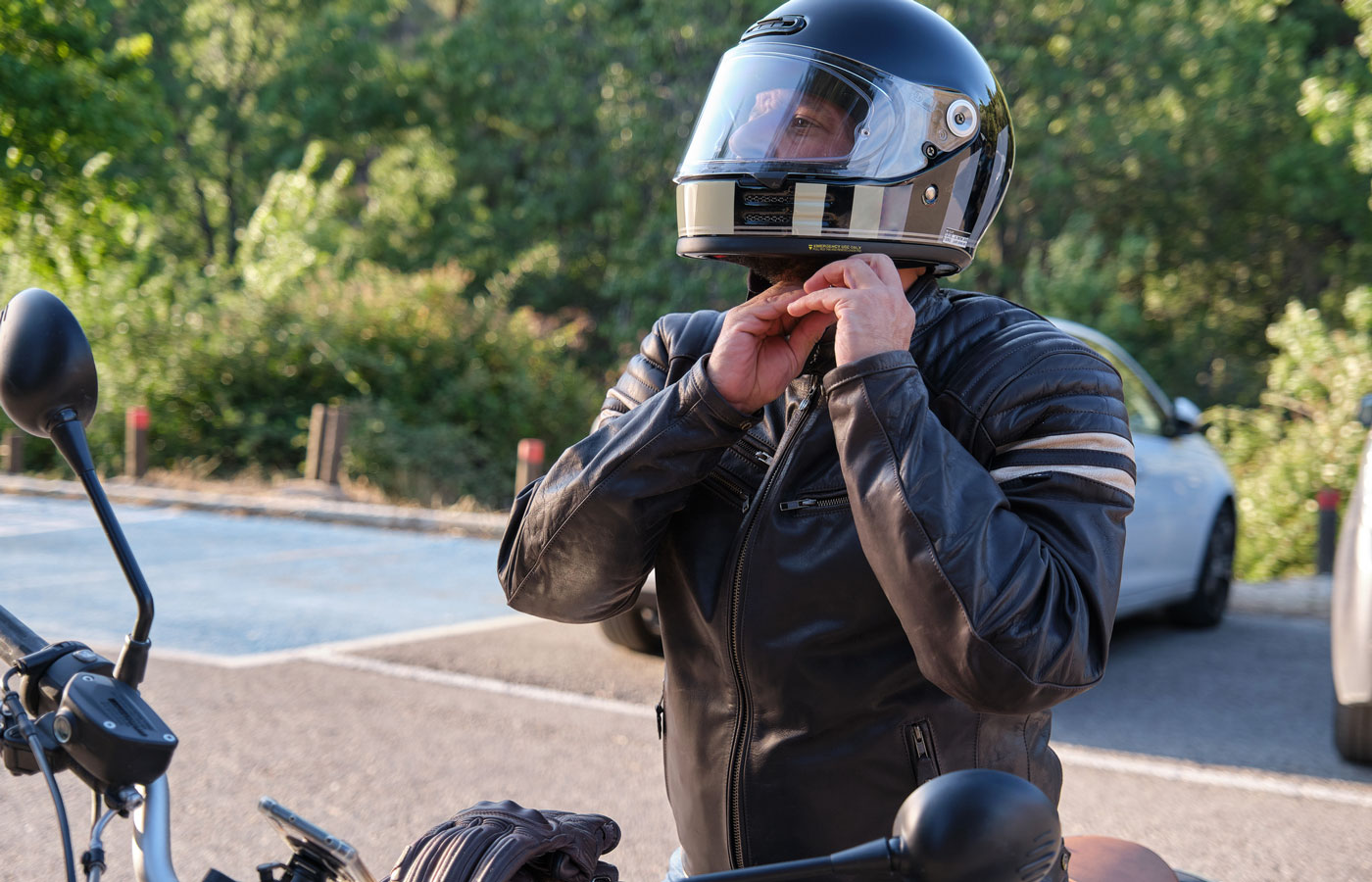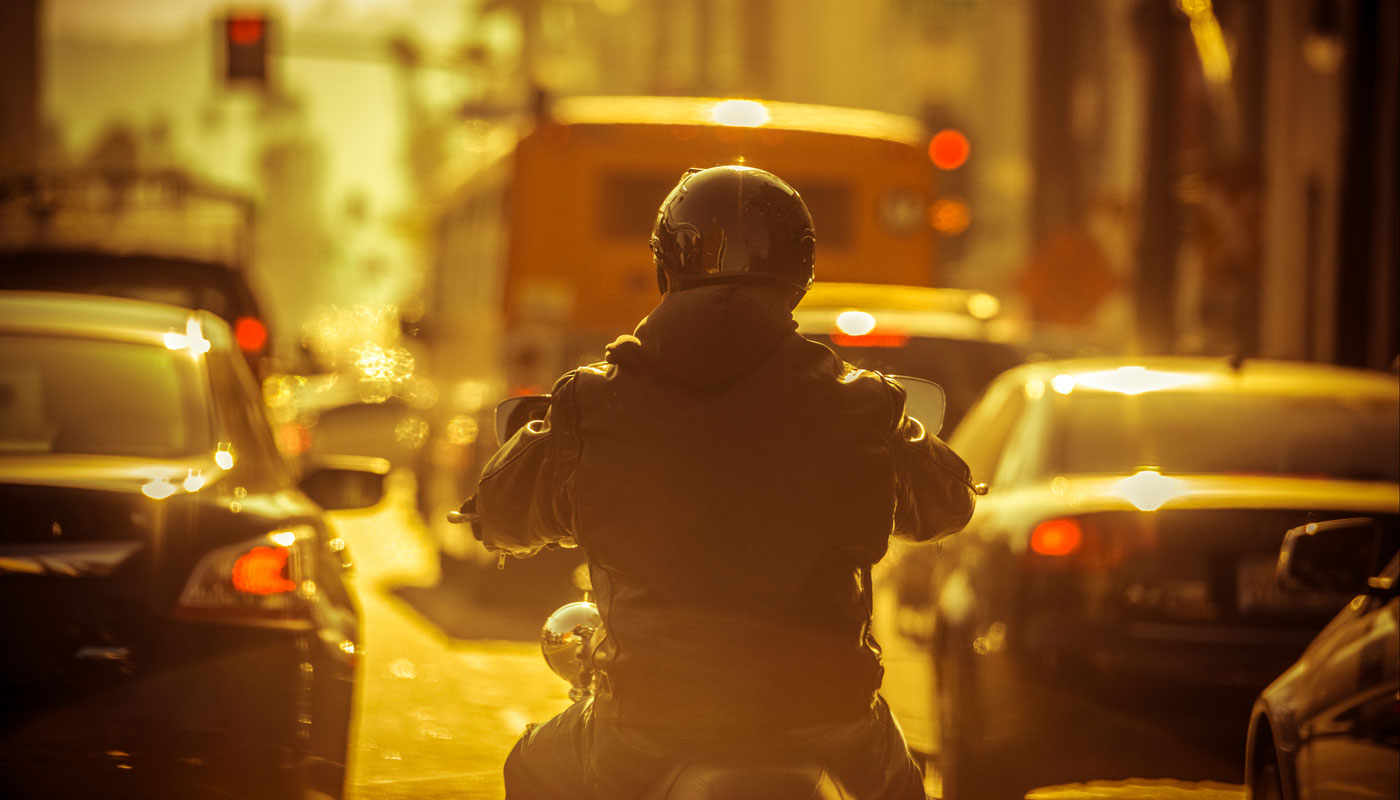Motorcycle Safety Tips: Ride with Confidence
Basic motorcycle safety tips to help you ride with confidence wherever the open road takes you.
 Getty
Getty
Basic Motorcycle Safety Tips
There is nothing quite like hitting the open road on a motorcycle. These two-and-three-wheeled machines are synonymous with adventure, freedom and community. Some choose to ride for the feeling of adventure and freedom while others to liberate themselves from the metallic confines of traditional four-wheeled vehicles. Whether you are chasing an open-road adventure or road trip serenity, it is important to be aware of the risks associated with this means of transportation and how to mitigate them.
On the road, danger is everywhere. These basic motorcycle safety tips will help you to ride with confidence. Just be careful not to let that confidence turn into overconfidence.
- Educate yourself. Motorcycle safety instructors will teach you the basics of riding a motorcycle and the rules of the road. Topics covered in these types of courses may include an overview of motorcycles, clutch control, starting, stopping, shifting, maneuvering, leaning, changing lanes and more. After the course, you must pass a driving and written test. Depending upon your state, you may need other classes or specialized licensing to legally operate a motorcycle.
 Getty
Getty
- Wear proper protective riding gear. Cars are equipped with multiple safety features designed to protect passengers in the event of a crash. Motorcycles aren’t. According to the CDC, more than 5,500 riders died in 2020, while over 180,000 received emergency care for crash-related injuries. (Motorcycle Safety | Transportation Safety | Injury Center | CDC). Your safety depends on equipping yourself.
Here are some recommended safety items to wear while operating a motorcycle:
Helmet – According to National Highway Traffic Safety Administration (NHTSA), over 25,000 deaths were prevented between 2002-2017 because riders were wearing helmets in motorcycle related crashes. These protective shells reduce head injuries by 69% and prevent operator fatalities by 37% and passenger fatalities by 41%.
If you are over 21, helmets are optional in some states. However, wearing a helmet, especially a full-face one, could mean the difference between life and death.
Body Protection – When you're on a motorcycle, there's nothing between you and external forces like asphalt, cement, or gravel that can cause harm. Wearing padded motorcycle jackets, pants, and gloves reduces road rash and other injuries. You may also want to include eyewear and sturdy, closed-toe footwear.
These items come in various colors and styles, making it easy to find one that matches your personality. When choosing protective gear, consider brightly colored apparel. Wearing neon colors increases your visibility to drivers and reduces your chances of a crash. Remember, safety is always in fashion.
Airbags – A lesser-utilized safety option is the motorcycle airbag. This device functions like car airbags but is actually worn. They come as vests and jeans that inflate in under a second upon impact, protecting a rider’s neck, back, and legs from serious injuries.
Get More of AAA’s Motorcycle Safety Tips
Be Safe- Preventative maintenance. Before a ride, it's important to inspect your vehicle. Check the brake lights, fuel level, chain (if applicable), tire pressure, engine oil, horn and clutch. Beyond this, regular service and maintenance are crucial to avoid equipment failure while riding. Your motorcycle is your only protection, so ensure it's well-maintained to prevent crashes.
 Getty
Getty
- Road-sharing. Every day, roads are filled with people trying to get where they need to go as quickly as possible. Entering the fray on a motorcycle is both exhilarating and dangerous. Over the years, the “Watch Out for Motorcycles” bumper sticker has become a common reminder for drivers to be aware of motorcyclists, but bikers also have a responsibility to share the road. Here are a few road-sharing tips to consider when taking your bike for a ride:
Adhere to the rules of the road. Knowing and observing your state’s laws regarding speed, lane filtering, helmets, traffic signals and noise restrictions is imperative for your safety and the safety of others.
Signal your intent. Most modern motorcycles are equipped with turn signals. It is important to make a habit of using them to signal turns and lane changes. If you are riding an older bike, then it would be a good idea to brush up on your hand signals. These will be covered in your initial rider training course and will come in handy when communicating your movements to other drivers. Important hand signals include turning, slowing, identifying hazards, and stopping. No matter how you choose to do it, always signal your intent. It will keep you safe and assist the general flow of traffic.
Assess blind spots. Every vehicle has blind spots. As a rider, be aware when you're approaching, riding next to, or passing a vehicle. Motorists can be unpredictable especially if they don’t see you. For your safety, stay in front of or behind a vehicle. If you can safely pass, stay three to four seconds behind the vehicle you intend to pass, checking oncoming traffic from the left side of the lane, signaling your intent, and then checking for oncoming traffic, once again, before passing.
Identify oncoming hazards. Uneven road surfaces, debris and slick roads could cause you to lose control of your motorcycle. When riding, be alert. If you come across any of these hazards, ride through at a steady speed. Sudden acceleration, deceleration, or leans could cause the bike to slide out from under you and should be avoided.
Approach intersections with caution. Intersections are more than just traffic convergence points. They are chaotic, with multiple threats to motorcyclists. Cars could pull out in front of you while you are crossing uneven terrain. Debris could be scattered across the road making it difficult to stop quickly when the vehicle in front of you slams on its brakes. The key is having a plan for the “what if’s” so that you are prepared to make a split-second decision when the need arises.
- Motorcycle Insurance. Not every state requires motorcycle insurance, but just because it's not required doesn't mean it's not worth having. Crashes result in property damage and personal injury. Whether you are at fault or not, insurance can help relieve the financial burden associated with crashes. So every time you ride, you can focus on what lies ahead.
Policy costs depend on various factors: age, motorcycle type, driving history, and location, all of which can impact costs. Shop around for quotes to get the best price and coverage.
There truly is nothing quite like hitting the open road on a motorcycle. These two-and-three-wheeled machines are synonymous with adventure, freedom, and community. Be sure to learn more about motorcycle safety tips so you can ride with confidence wherever the open road takes you.